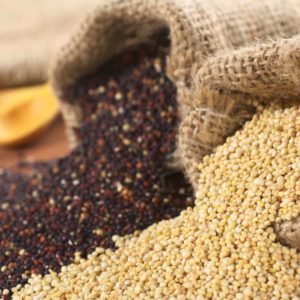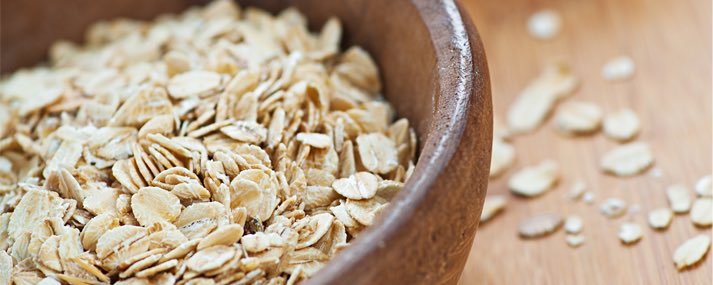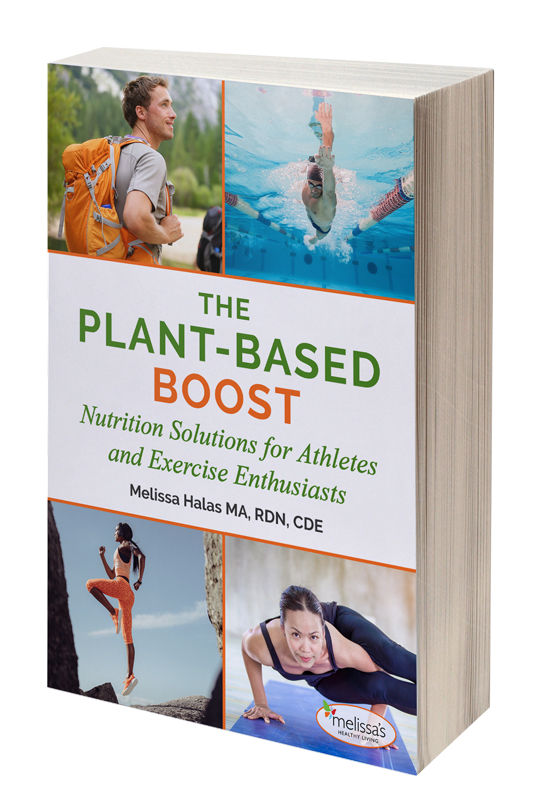
We know that plant-based foods each offer unique health benefits, so what exactly are the benefits of ancient grains and seeds?
In the previous post, we began to look at ancient grains and seeds – when they originated, some myths and facts, and a few ways to eat them. Many foods are commonly referred to as grains, but some of the popular ones you’ve heard of technically aren’t grains. For example, amaranth, buckwheat, and quinoa are considered pseudo-cereals, but we eat and enjoy them as grains because of their similar nutrient content to grains. Flaxseeds and chia seeds are also in the spotlight, but they are oilseeds, not grains. Because of these classifications, we grouped both grains and seeds so we can properly classify the foods. Let’s take a closer look at the benefits of ancient grains and seeds and all they can do for your health.
Mighty Health Benefits of Ancient Grains and Seeds
Choose a variety of ancient grains to maximize the diversity of plant power benefits. They are a great source of carbohydrates, fiber, and antioxidants for athletes and exercise enthusiasts to feel and perform their best. Here are a few key ones and their health benefits.
Flaxseed
Flax is high in alpha-linolenic acid, a type of omega-3 fatty acid that is good for heart health. It contains phytochemicals called lignans (80% more than other plants), and fiber, and is a food that fights cancer! Flaxseeds are also good for digestive health and can help lower LDL (bad) cholesterol, which can reduce the risk of heart disease. Remember when adding high fiber foods to your diet, add them gradually, and make sure you drink your water! For maximum nutritional benefit, grind the seeds before you eat them.
Chia seeds
Chia seeds provide an omega-3 boost, with 5 grams of alpha-linolenic acid (ALA) per 2 tablespoons. The recommendation per day of ALA is 1.6g for men and 1.1g for women. Omega 3s are a nutrient of concern for vegetarians and vegans – learn more in my new book, The Plant-Based Boost, Nutrition Solutions for Athletes and Exercise Enthusiasts. Chia seeds are also a good source of calcium, magnesium, and phosphorus. These minerals are all important for strong, healthy bones. They are also high in protein and fiber. When mixed with liquids, chia seeds expand in the stomach and promote satiety (the feeling of fullness). This helps send signals to your brain that you’re full, which can curb overeating and promote weight loss.
Buckwheat
One of the main benefits of the ancient grain buckwheat is that it protects your heart due to its phenol content. Despite the mention of “wheat” in its name, it is gluten-free, and there are many ways to enjoy it! Read more about how to eat buckwheat!
Quinoa
Quinoa has anti-inflammatory properties and provides healthy fats, protein, phosphorus, manganese, copper, and magnesium. It also contains many antioxidants that contribute to overall health. Quinoa contains a lot of fiber – in fact, 1 cup of quinoa contains as much fiber as 8 cups of white rice! For any active individuals looking to gain or maintain muscle, choosing a grain like quinoa with a higher amount of protein can help you reach your goals. My book covers protein needs across all activity levels.
Amaranth
Amaranth is a seed used as a grain. It provides calcium, magnesium, potassium, and iron. Like quinoa, it’s also a complete protein! It contains lysine and methionine, two amino acids that are missing in many grains. With 13 grams of protein per cup, it is a great way to pack in carbohydrates and protein post-workout. Plus, you can get closer to your fiber needs for the day. Adding amaranth to your diet may help reduce both LDL (bad) cholesterol and triglycerides, lowering your risk for heart disease.
Millet
Millet provides polyphenols and dietary fiber. Polyphenols have numerous health benefits, including cancer and heart disease prevention, as well as antibacterial properties. Millet also contains magnesium, which may help reduce the incidence of migraine headaches, potentially improve asthma, and may improve mood during PMS.
Oats

Oats contain beta-glucan, a type of soluble fiber. Beta-glucan plays a role in reducing the risk of insulin resistance, dyslipidemia, hypertension, and obesity. Soluble fibers slow down digestion to help you maintain a feeling of fullness as well as positively affect blood sugar levels.
Fiber Powerhouses – Grains and Seeds
One key benefit of ancient grains and seeds on this list is their fiber content. They can contain both soluble and insoluble fiber, making them great for gut health and regularity. Here are a few fun fiber facts about these ancient grains and seeds:
- One cup of uncooked millet has as much fiber as 4 cups of white rice!
- Just one ounce of chia has as much fiber as 6 carrots.
- One tablespoon of flax has as much fiber as 4 cups of spinach.
- Half a cup of steel-cut oats has as much fiber as 4 cups of cornflakes.
If you’re interested in learning more nutrition facts and health benefits about specific grains, I provide a detailed list of 16 grains in my book, The Plant-Based Boost, Nutrition Solutions for Athletes and Exercise Enthusiasts. Incorporating ancient grains and seeds into your daily meals can help reach your nutrient needs through balanced meals and tasty flavors.




